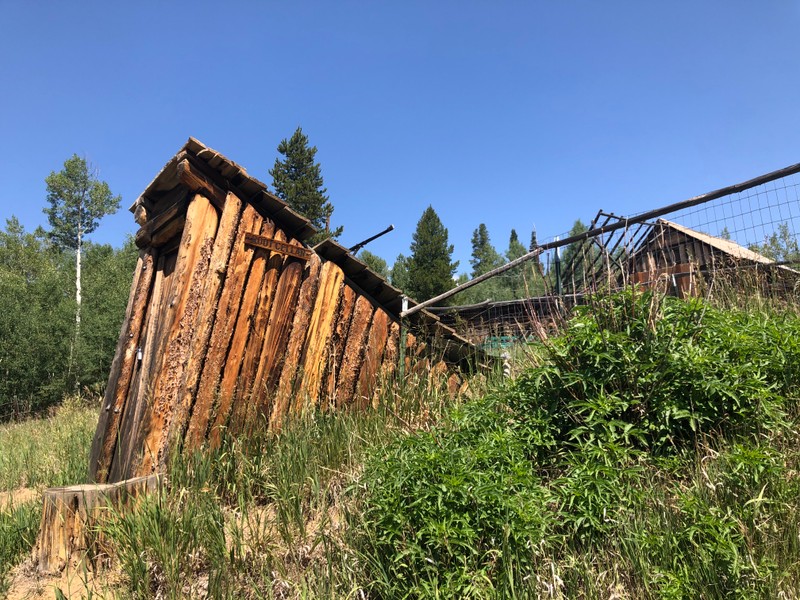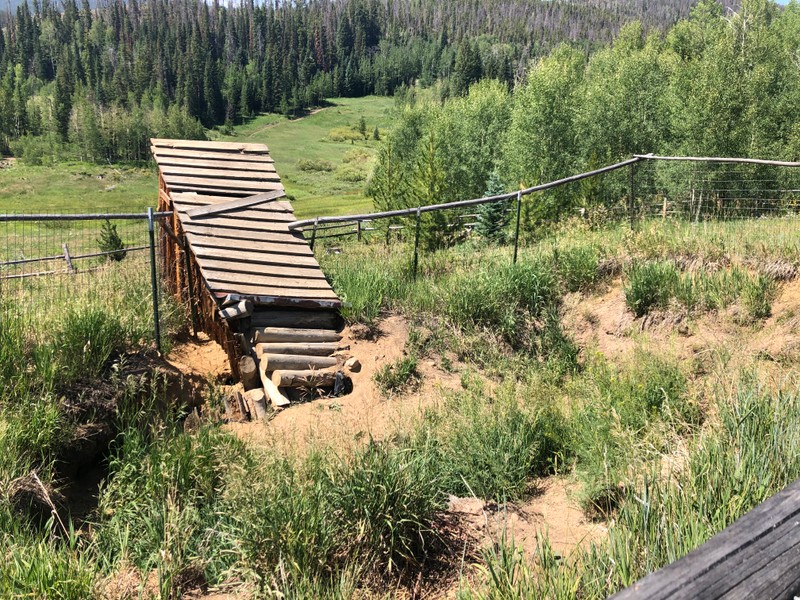Rowley Homestead Root Cellar
Introduction
Text-to-speech Audio
This is a reconstruction of Fred’s root cellar, which was also in this location. Due to animal activity, the root cellar collapsed in the mid-2010s. The original root cellar was a small dirt room with wooden shelves along the walls. Today our reconstruction includes a concrete vault with a wood-cladded interior and dirt to match Fred’s. Fred stored almost all of his food for the winter months in this room, including root vegetables, eggs, dairy, canned goods, and smoked meat.
Images
The covered staircase to the root cellar shown from the side

The covered staircase to the root cellar shown from the back, behind the collapsed root cellar

Backstory and Context
Text-to-speech Audio
In the underground room, the temperature stays consistent all year at about 38 degrees Fahrenheit. This cool temperature ensures that food stays preserved, like modern refrigerators. In the summer, the cooler temperatures prevent foods like dairy products, eggs, and vegetables from spoiling in the heat. In the winter, constant humidity and insulation underground prevented vegetables and canned goods from freezing. The room was used both for long-term storage and for keeping dinner cool throughout the day. This room was dug and constructed by hand, like every other building at the Homestead. Fred used a shovel or a tool like the drag scraper located next to the root cellar.
The root cellar was particularly important for vegetable storage. Fred’s garden was located far from the house, on the side of Coyote Tooth, the mountain across the field. He likely chose that location so runoff from the mountainside would help keep the area lush. The growing season this high in the mountains is short, so Fred grew a lot of root vegetables like beets, potatoes, rutabagas, and carrots. These vegetables would stay good all winter in the root cellar.
During his first few years at the homestead, Fred grew lettuce. Lettuce was a huge cash crop in the area during the 1920s. Fred and other farmers shipped their lettuce to Denver on the railroad. Unfortunately, in the later 1920s, a lettuce blight hit Grand County. Lettuce did not recover during Fred’s lifetime. After that, Fred’s income was closely linked to his animal products, though he may have bartered vegetables with neighbors or friends, and as laborer or ranch hand.
Sources
Archives of YMCA of the Rockies, Snow Mountain Ranch Collection, Rowley Homestead folders.
